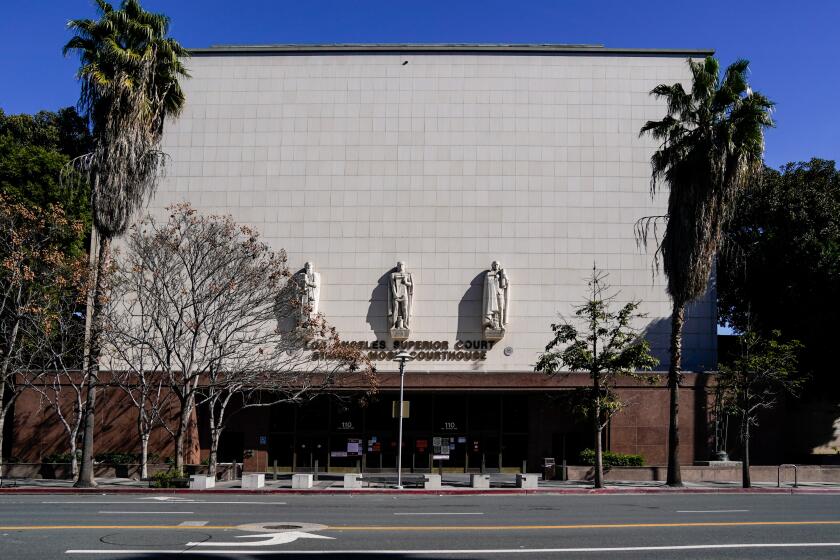Opinion: Blowback: Why polystyrene bans do more harm than good

What better place than California to become a zero-waste state? It is the nation’s epicenter of innovation, where creative people think about economic and societal challenges and create unique solutions. As California sets about meeting its stated goal of 75% waste reduction by 2020, we must rise to the challenge by identifying substantive ways to get there and include a comprehensive education program.
Appealing as it might sound in a state that just voted to rid itself of those formerly ubiquitous plastic grocery bags, banning certain single-use food-service containers is not one of these substantive, innovative ways to meet California’s ambitious goal. Some cities would rather use the same path they have trampled before rather than doing the necessary work that would garner real progress, and The Times editorial board, sadly, agrees with them.
But before other cities and even state lawmakers rush to follow The Times’ advice, they should know that not all bans are worthwhile, and many do not result in less waste.
We at the Los Angeles Area Chamber of Commerce supported the plastic bag ban. There are reusable options that are accessible and viable and many in the business community supported the ban because it made sense for both industry and environmental groups. However, that is not the case for bans on single-use food-service products.
Instead of bans, we should consider new solutions. We know there are innovators here in our backyard that are making a difference.
Single-use polystyrene (hard plastic) or expanded polystyrene (mistakenly referred to as Styrofoam) are used for drinks, take-out food, roasted chicken, straws and much more. Contrary to widespread belief, popular replacements often have a bigger environmental impact than the foam we already use, resulting in more air and water pollution during their life cycle, more waste by weight and volume and even more energy use. Plus, many of the alternatives are less likely to be recycled than foam. Some municipalities have also gone further and required compostable containers, products that not only cost more than what they’re supposed to replace but also cannot be recycled by many of the jurisdictions mandating them.
The result is higher costs without any reduction in waste. My organization has not seen a study or assessment as to whether banning single-use food-service products actually results in a measurable difference in waste. I do know that in 2008, San Francisco found that after it banned single-use food-service containers, non-foam cup litter jumped significantly. (Go to Page 34 of this report.) Shouldn’t this be a critical first step to ascertain the impact of a ban on such products?
Municipalities would be well served to look at the State Water Resources Control Board’s final trash report from April 2015. The board reviewed the best recommendations to limit trash in the waterways and encouraged municipalities to enact policies that would achieve statewide goals. It found that bans on single-use products “would not reduce trash.” Specifically, the board’s report states on Page 96:
“Contrary to ordinances or laws that prohibit distribution of plastic carry-out bags, which are typically accompanied with requirements and/or incentives to utilize reusable bags to avoid a product-substitution effect, other types of product bans enacted by an ordinance, such as take-out items, may involve a substitution of the banned item. Mere substitution would not result in reduced trash generation if such product substitution would be discarded in the same manner as the banned item. Any such product ban enacted by an ordinance that would not reduce trash would not assist in achieving compliance.”
Instead of bans, we should consider new solutions. We know there are innovators here in our backyard that are making a difference. Titus MRF Services in South Los Angeles, to cite just one example, has been partnering with primary material recovery facilities, or MRFs, to further recycle “trash” before it goes to landfill and has found domestic markets for the products. The refuse that gets recycled includes aluminum cans, polystyrene and expanded polystyrene.
Let’s stop fooling ourselves about the efficacy of bans and actually roll up our sleeves and do the hard work. Comprehensive and innovative recycling and education programs may not make for a pithy headline, but they are the right approach for us to achieve a zero-waste society.
Gary Toebben is president and chief executive of the Los Angeles Area Chamber of Commerce.
This piece is part of Blowback, our online forum for rebuttals to The Times. If you would like to write a full-length response to a recent Times article, editorial or Op-Ed and would like to participate in Blowback, here are our FAQs and submission policy.
Follow the Opinion section on Twitter @latimesopinion and Facebook
More to Read
A cure for the common opinion
Get thought-provoking perspectives with our weekly newsletter.
You may occasionally receive promotional content from the Los Angeles Times.






